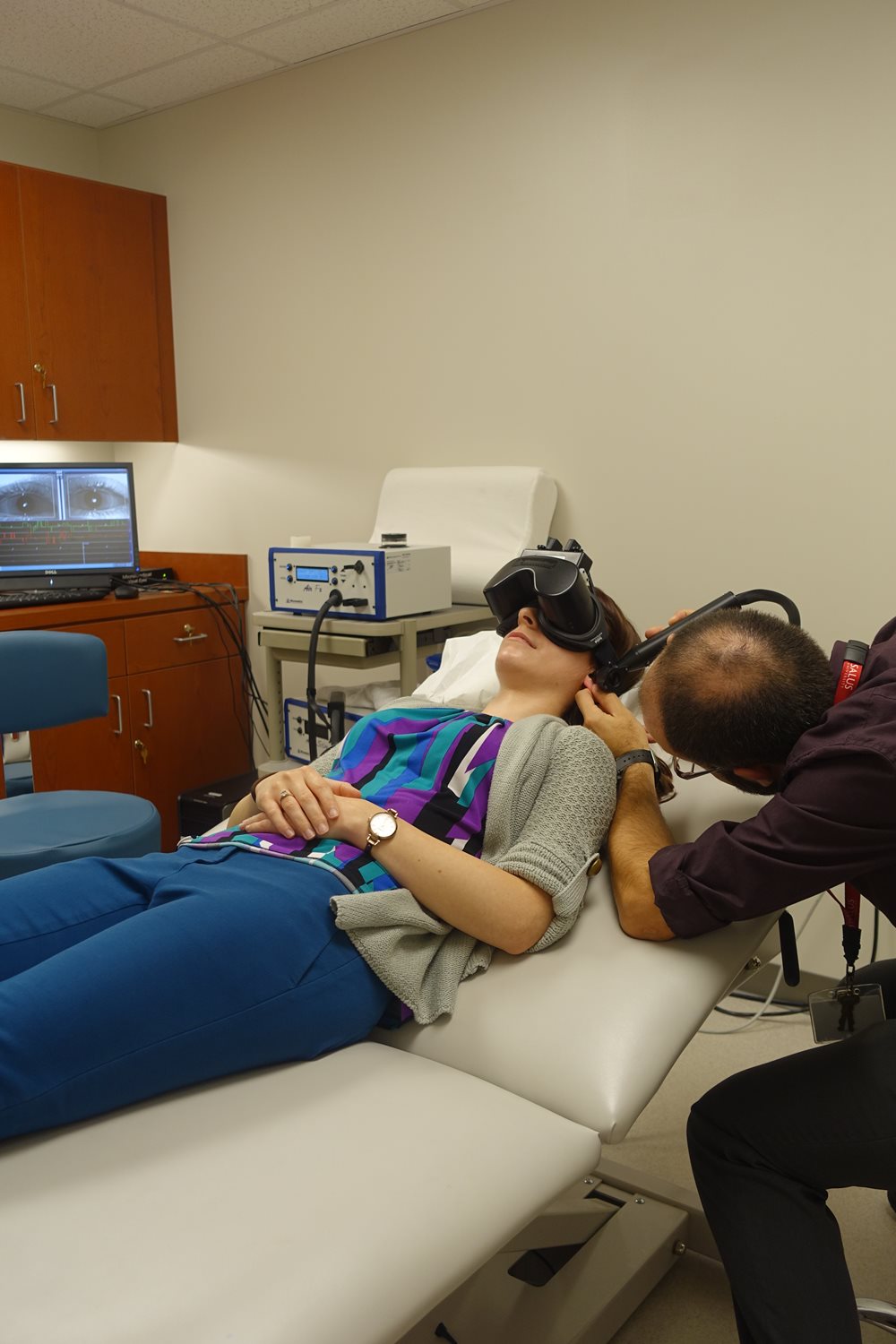What to Expect: VNG/ENG Balance Evaluation
 About 69 million Americans have experienced a vestibular disorder, an issue with the balance system in the body, according to a recent study published in JAMA, a peer-reviewed medical journal. One of the most common tests to evaluate a balance disorder is a videonystagmography or electronystagmography (VNG/ENG). The four-part test evaluates various aspects of the balance system to identify possible vestibular disorders.
About 69 million Americans have experienced a vestibular disorder, an issue with the balance system in the body, according to a recent study published in JAMA, a peer-reviewed medical journal. One of the most common tests to evaluate a balance disorder is a videonystagmography or electronystagmography (VNG/ENG). The four-part test evaluates various aspects of the balance system to identify possible vestibular disorders.
Dr. Greg Genna, an audiologist at the Pennsylvania Ear Institute (PEI) who specializes in vestibular disorders, explains that the VNG/ENG is most utilized because it is one of the only tests that can evaluate the vestibular systems in each ear separately.
“It is straightforward to perform, is quick, and can provide information about the function of various aspects of the balance system,” he said. “By analyzing the results, diagnoses can be made, or further, more advanced testing can be recommended as needed.”
Here’s what to expect if you are receiving a VNG/ENG evaluation:
Part 1: Oculomotor Evaluation
The patient sits in front of a video monitor wearing goggles equipped with infrared cameras. A red dot will appear on the screen and the patient will be asked to follow its various movements. The goggles will record their eye movements. Certain reactions such as rapid eye movement in particular positions and difficulty tracking the red dot can reveal the presence of a balance disorder.
Part 2: Body Positioning
The next portion includes the audiologist moving the patient’s body into different positions that stimulate certain balance organs. The goal is to see if the patient’s vestibular system reacts normally to the various positions.
Part 3: Static Positioning
Similarly, to part two, this section of the test involves moving the head and body into static positions. The audiologist will examine whether or not the patient’s vestibular reactions indicate a disorder.
Part 4: Caloric Testing
In the final portion of the exam, the patient will lie back while still wearing the goggles as the audiologist places cool air or water in each ear. The sensation will activate a normally functioning balance system, making the patient feel slightly dizzy. The test is the only one that can directly stimulate one side of the vestibular system. Once the cool air or water is placed in each ear for 30 seconds (water) or 60 seconds (air), the test is repeated with warm air or water. Those who have a balance disorder typically do not feel dizzy or in very rare cases, feel extreme dizziness.
If you or someone you know experiences symptoms of vertigo, dizziness or unsteadiness, audiologists at the Pennsylvania Ear Institute (PEI) are experts at diagnosing balance disorders. They have some of the most specialized equipment in the country to evaluate these issues.